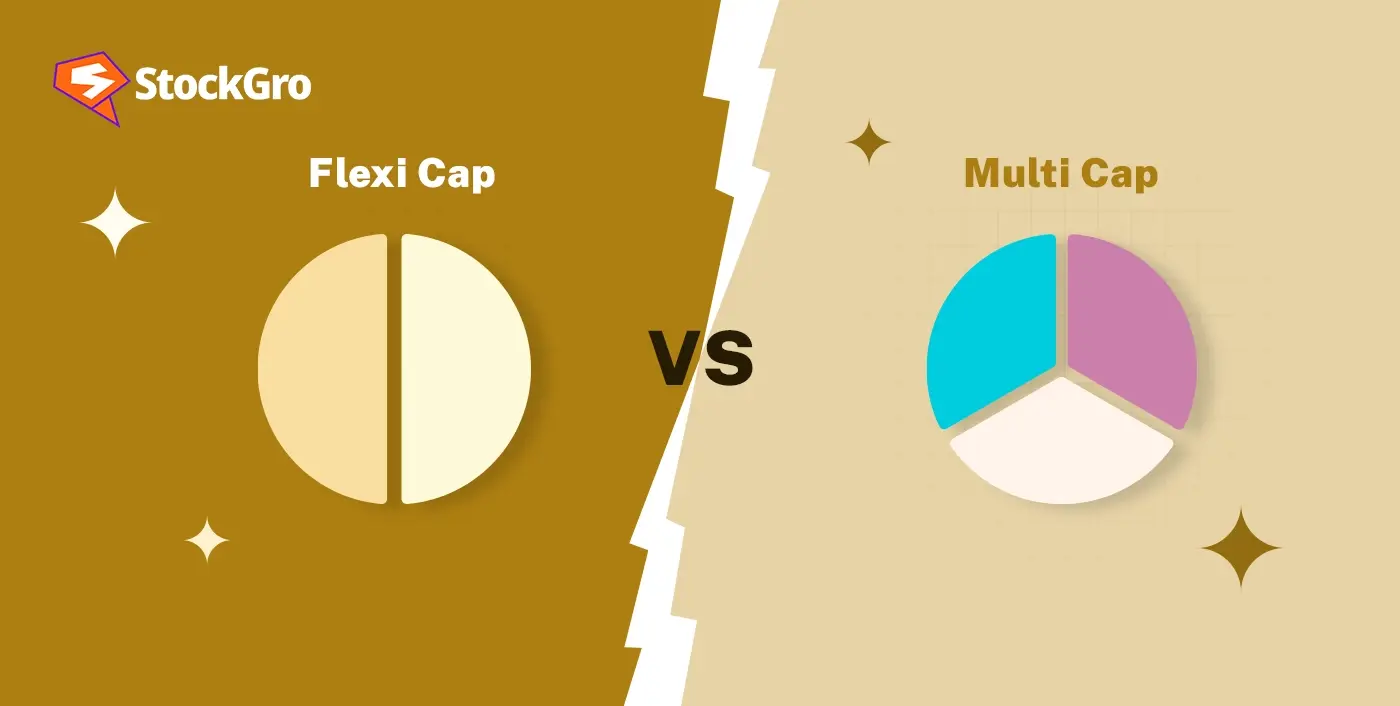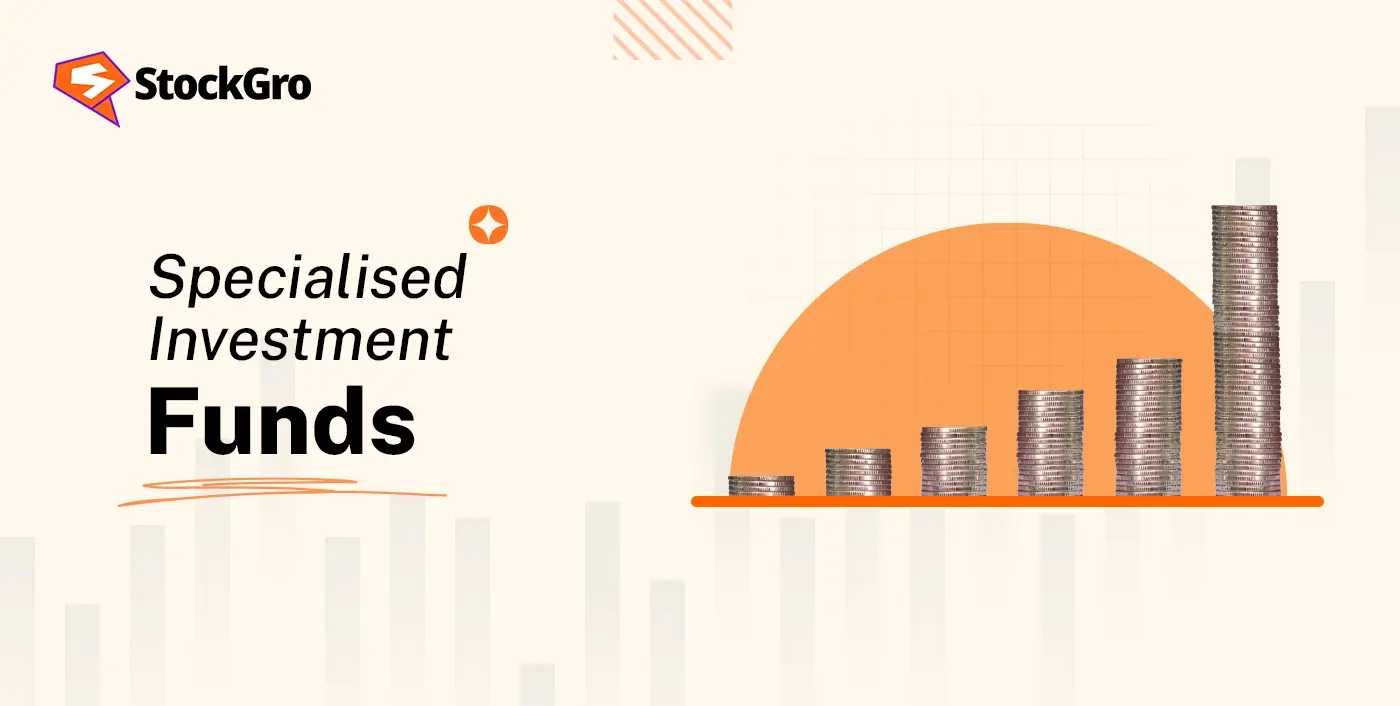
Mutual funds have been among the best investment options and have shown a rise of 32% in the total number of folios. Even for a young professional or a retired individual, these funds are a smarter way to invest in markets. A mutual fund just takes money from several investors and uses it to invest in stocks, bonds, or other instruments.
Among the various categories, equity mutual funds remain one of the popular choices for investors. The two categories that often spark curiosity are: flexi cap funds and multi cap funds. These may look similar to you, but they follow different strategies in investing.
Let’s walk you through what these funds mean and how they differ.
What is a multi cap fund?
Multi cap funds work with a simple rule that is balance. These funds divide their money among three baskets:
- Large-cap
- Mid-cap
- Small-cap stocks
From September 2020, SEBI made it compulsory for all multi cap schemes to maintain at least 25% in each of these categories. So, even if one sector hits its bottom, the others may still keep the fund steady.
Large-cap stocks offer strength and trust. Mid-caps bring solid growth opportunities. Small-caps carry the higher returns. Together, they create multi cap funds. As a result, their price movements may be less volatile compared to funds focused on a single segment, even during periods of strong market momentum. These funds provide a diversified approach within a single investment scheme
Here’s a quick look at the performance of multi cap funds in the past few years as of June 10 2025.
| Time period | Return (%) |
| 1 Year | 8.72% |
| 3 Year | 23.26% |
| 5 Year | 27.35% |
| 10 Year | 15.97% |
Also read: Diversify and Protect Your Portfolio with Diversified Mutual Funds
What is a flexi cap?
Flexi cap funds don’t follow a fixed pattern. These equity mutual funds are not restricted by the size of companies they invest in. The fund manager is free to shift between large-cap, mid-cap, and small-cap stocks depending on how the market behaves and where strong potential shows up.
When volatility takes over, the fund might lean more toward large caps for added strength. If the market shows momentum, the portfolio may tilt toward small or mid-sized firms.
Under SEBI rules, at least 65% of the total assets in a flexi cap fund must be parked in equity and equity-linked investments. That leaves space for the fund to adjust according to market direction.
Here’s a quick look at the performance of flexi cap funds in the past few years as of June 10 2025.
| Time period | Return (%) |
| 1 Year | 7.90% |
| 3 Year | 20.38% |
| 5 Year | 23.51% |
| 10 Year | 14.86% |
Also read: What are mutual funds?
Differences between multi cap funds & flexi-cap funds
If you want to know the difference between flexi cap vs multi cap funds, here’s an overview:
| Feature | Multi cap funds | Flexi cap funds |
| Structure of Investment | Mandatory 25% each in large-cap, mid-cap, and small-cap. | No fixed allocation |
| Manager’s Control | Limited control | Full flexibility |
| Equity Allocation Rule | Must remain heavily invested in equities. | Can shift more into cash/debt if needed. |
| Risk Profile | Higher volatility due to mandatory small- and mid-cap exposure. | Managers can reduce risk by increasing large-cap exposure. |
| Taxation | Same for both. | Same for both. |
1. Structure of investment
Multi cap funds are built on a rule-bound format. They must use your money in segments like large-cap, mid-cap, and small-cap. As per SEBI rules, each of these segments must get at least 25% of the investment. This creates a diversified but relatively well-balanced fund basket.
Flexi cap funds, on the other hand, give fund managers complete liberty to invest any percentage across market capitalisations. So, one month they may invest heavily in large-cap stocks, while the next month they might load up on small-cap opportunities.
2. Equity allocation rules
Multi cap funds make the fund stay primarily equity-heavy, even during downturns.
Flexi cap funds have a comparatively lower threshold, requiring a minimum equity allocation of 65%. This gives more space to shift partially into cash or debt when equity markets look bad.
3. Risk Profile
Multi cap funds are exposed to all segments, including the more unstable small-cap zone. Since there’s no escaping these segments even during downturns, volatility can shoot up even in bearish markets.
Flexi cap funds can keep risk up or down, depending on the fund manager’s assessment. If markets are highly volatile, more money can be moved into large-cap stocks for added protection.
4. Taxation
Both multi cap and flexi cap funds are treated as equity funds under Indian tax rules. That means:
| Fund type | Holding period (on or after 23rd July 2024) | Tax rate |
| Equity | STCG: Less than or equal to 12 months | 20% |
| LTCG: Greater than 12 months(applicable above ₹1,25,000) | 12.5% |
Also read: Mutual fund performance ratios.
Conclusion
While comparing flexi cap vs multi cap funds, you can easily choose between the two. With multi cap funds, you get a fixed portion of large-cap, mid-cap, and small-cap. On the other hand, flexi cap funds offer a way to shift between segments based on potential. If you prefer consistency in allocation, multi cap fits better. A flexi cap is more suitable if you’d rather let the fund manager chase sharp moves in the market.
FAQs
- Are multi cap funds risky?
Multi cap funds carry higher risk since they are entirely tied to equity markets. That’s because mid and small-cap stocks often come with thin trading volumes and market swings. So, hold quality funds through market phases to test your strategy and patience. Sudden downturns can change stock prices tremendously, especially during economic slowdowns or panic selling. Hence, you must always review the fund’s stock-picking style. Even a well-performing fund can see short-term dips.
- Do flexi cap funds support long-term investing?
Yes, these funds do support long-term investing. They usually pick large caps for steadiness, mid-caps for potential, and small caps for market volatility. This allows the fund to work in different market cycles. Over time, it can balance risks and returns without being confined to a fixed structure. Since managers have full freedom to shift allocations, they can act quickly in downturns or rally into momentum. For investors with long-term goals, this strategy may add more value than sticking to one segment.
- Which is better: flexi cap vs multi cap fund?
Flexi cap funds give full control to the managers to move as per changing trends. Multi cap funds, on the other hand, stick to a fixed portion from each cap segment. It will be the best one for equal representation across various caps. The decision rests on how active you want the manager to be. Some prefer the fluid approach of flexi cap schemes, while others want balance and discipline across large, mid, and small caps.
- What are the disadvantages of multi cap funds?
As multi cap funds invest in large, mid, and small caps, identifying dependable stocks in each category is difficult. These segments often present lower liquidity, heightened volatility, and increased risk. As a result, it demands discipline and market knowledge to maintain consistent quality across the portfolio. Moreover, sudden swings in small caps or sharp corrections in mid caps can pull down overall returns. If the fund manager misses timing or holds weak companies, the impact can hurt long-term growth.
- Is the flexi cap fund tax-saving?
Flexi cap funds follow a two-tier tax treatment. Short-duration holdings are taxed at a higher rate, while longer holdings are subject to a reduced rate. This structure can influence how investors time their exits. They don’t offer a fixed tax deduction unlike ELSS funds. Still, it’s wise to map your tax bracket before redeeming. Keep in mind that dividends also come with tax. This may affect post-tax returns depending on the payout structure.

